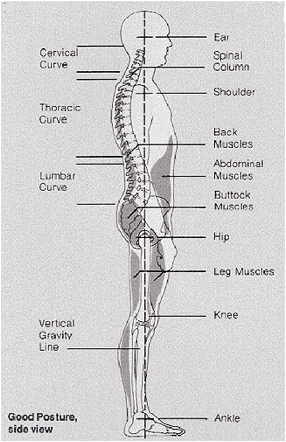Let’s talk about Upper Crossed Syndrome, a condition derived from sustained poor posture. This is a condition of muscle imbalances, with typical pairs of tight and weak muscles.
What does it look like?
In upper crossed syndrome, you will observe rounded shoulders, a forward-drawn head, elevation of shoulders, and shoulder blades that protrude from the back.
The best way to observe your own posture would be to sit, as you normally would (no cheating!) and have a friend take a view from the side. Any resemblance to the above photo? You may even find trigger points, or tender spots, in the SCM, pecs, traps, or levators.
You may even find that you are restricted in motion, as a result of a chronic overload of musculature; remember: the ligaments act as static stabilizers of a joint, while the muscles are a dynamic stabilizer; when the muscles surrounding a joint are limited, the joint is not optimally supported. You may also be experiencing chronic neck and arm pain, or even headache, as a result of this postural imbalance.
How chiropractic can help
A thorough physical exam will identify postural faults, trigger points, joint dysfunction, and the tight and weak muscles that characterize this condition. Chiropractic manipulation (adjusting), manual stretching, and soft tissue work will begin to restore motion and alleviate symptoms immediately, as we begin to work together to stretch and strengthen the involved muscles.
It is important to remember, as with any condition, it took a significant amount of time to develop, and thus will require time, and hard work on your part, to reverse. Good posture is a good habit! While it will take a lot of focused concentration in the beginning, it will get easier as you work at it.
***This article is not intended to replace the proper diagnosis and treatment of any disorders. It is important to seek care to determine the cause and best management of neck and back pain or headache.
Strengthening exercises for:
Stretch for:
You may have noticed that a strengthening exercise is not included for the deep neck flexors; guidance is needed in learning this exercise, as it is easy to instead activate the SCM (which can also flex the neck), only causing further aggravation of any symptoms. This exercise is monitored over several visits to the office, to ensure it is being performed properly, and the deep neck flexors are indeed being activated.
Dr Natasha Hayden is a pediatric and prenatal chiropractor that is passionate about helping her community discover just how good their bodies are designed to feel, so they can do more of what they love.
Your health goals are within reach with the support of our team.

